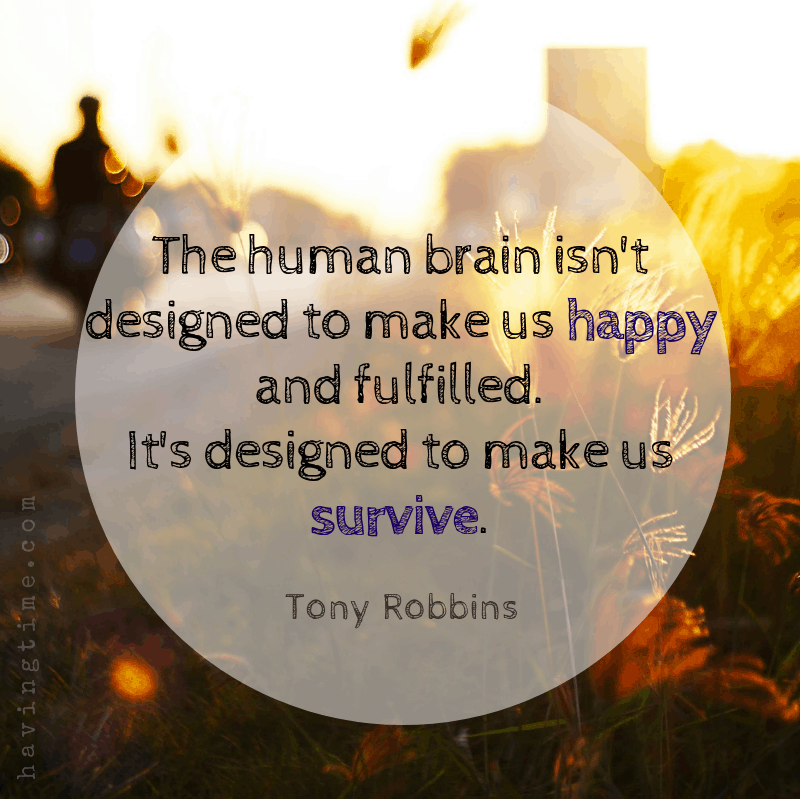Does a clear headspace really mean a clear mind? What is the best way to clear your mind anyway? It’s quite simple.

Think: clean space = clear mind
Three years ago I radically decluttered my house, packed a backpack and moved to Vietnam.
Living clutter-free is as liberating as Marie Kondo promises it to be. Now Airbnb guests enjoy my clutter-free and permanently tidy home, while I rent a sparsely furnished house in a small fishing village in Hoi An.
Like my neighbours, I own very little here. My minimalism is a choice, theirs an economic necessity. But it’s also very practical. Everything can be easily dragged outside after the wet season for airing and to wash the mould off.
This clutter-free life makes me feel lighter and at ease; less stressed by the weight of possessions, and I am more focused on what really matters. I don’t have to worry about what I wear. Often it’s simply a matter of what’s not in the wash.
What I hadn’t factored in when I radically cleaned out my kitchen cupboards, was that my mental clutter was coming on the journey with me.
That constant mental chatter we all live with is not something you can stuff into a large garbage bag and toss into a charity bin. It requires ongoing purging.
But just like our wardrobes don’t really need to hold all the many clothes we will probably never wear again; our heads also don’t have to store everything.
A cluttered mind is unfocused and restless. At work, we use diaries and folders to keep track of deadlines and to keep things in order.
We can do the same with the mental chatter. We can write things down to declutter the mind, free up headspace and feel at ease.
Here are 5 writing prompts you can use to declutter your mind:
1. Do a brain dump
We organise our lives and work by dumping the many things that keep us busy and distracted in our to-do lists. Likewise, we can dump our emotions and our internal toxins – our worries and our fears – on a piece of paper. When you do that, the page becomes your emotional garbage bag. You unload your mental clutter on the page and get things out of your head, and then you move on to a fresh page.
You can do this whenever you feel overwhelmed and when life feels stressful. A more effective way to do this is as a regular practice, starting each day with a fresh page.
The practice of Morning Pages was pioneered by Julia Cameron as a way to cleanse the mind and to keep it focused and clear. The idea is to handwrite three pages first thing every morning, unloading whatever comes up, without structure.
Freewriting like this is about the process, not the product. It takes a bit of commitment to do it every day, but like any routine you master, it’s highly rewarding.
2. Write a journal
“History is littered with examples of successful people who kept daily journals. It ranges from Marcus Aurelius to Ben Franklin, and from Mark Twain to George Lucas…” –– Tim Ferriss
A journal is a place where you go to debrief and to unload regularly. It’s a deeper form of detoxing the mind.
I think of my journal as my compost bin. It’s where I dump things to let them stew until they turn into something else.
A regular journaling practice can help you identify thought patterns and make you more aware of your reactions. If you do it regularly, it can train you to pause before you respond. A journal also gives you the luxury of a blank page. It’s a clutter-free space where you can get to what’s essential and to what should be a priority.
It’s not important whether you do this by hand or on your computer. Though writing by hand connects you in a different way to your mind because it forces you to slow down. Even if you think of your handwriting as ugly, or if you haven’t written by hand for a while, try it and see what it feels like.
3. Write a letter to your inner critic
Mental clutter is the result of our compulsion to overthink things. Regretting a mistake you made 5 years ago, worrying whether you’ll ever be good enough, we all have these thoughts. They are unhelpful and self-sabotaging and keep us from reaching our full potential. The inner critic is the first thing we need to try and banish from our minds.
There is a scientific explanation for our overthinking minds. Evolution has programmed our brains to be permanently switched on to detect bad news and fear. It’s what psychologists call an in-built negativity bias.

In other words, we are naturally predisposed to analyzing past mistakes and evaluating future threats to ensure our survival. Today we no longer have to be afraid of attacks by dangerous animals. What we fear are attacks to our self-image by our inner critic.
Here’s a simple but effective way of dealing with it: Write your inner critic a frank, uncensored letter. Life coach Martha Beck, Ph.D. advocates giving it a name and an identity. This creates a mental picture of your inner critic, which will make it easier to decide whether you want to continue to fight with your inner critic or whether you are ready to make peace with it. Start by giving your inner critic a name and an identity and then let your pen lead the way.
4. Write an unsent angry letter
Abraham Lincoln famously used to compose what he called a ‘hot letter’ whenever he needed to tell someone off. He’d unload his anger on the page; then he’d put it aside until his emotions had cooled and he was able to deal more diplomatically with the matter at hand.
There is no need to send your ‘hot letter’ because regardless of how carefully it is worded, it will almost always make things worse. An angry letter is a letter you write for yourself to release your anger and to cool off. The act itself of writing to a person or about an incident that made you angry can be deeply healing. In the process, you can learn much about your triggers, impulses and acquired habits.
Write a letter to the person who angered you. Like a real letter start it with the words: “Dear x …”. Alternatively, write a letter to your angry itself. Again, create a mental picture of your anger by giving it a name and an identity. My anger letters are addressed to “Dear Rumpelstiltskin”.
5. Free-write to writing prompts:
Timed free writing to prompts is a very effective way of silencing the inner critic. Writing to a timer allows you to connect to your unfiltered voice, beyond your logical mind. It’s a way of opening the door to the hidden cupboard with your mental clutter.
Set your timer for 10 minutes and write without stopping to think or edit. Just keep the pen moving, trusting that it will lead you to the heart of what is really bothering you. Here are my favorite prompts:
What scares me …
What worries me …
What I can let go …
What if …
The key to using writing as a way to declutter the mind is to do it regularly.
Can you imagine living in a house that’s permanently spring-cleaned? How blissful would that be? Take it from me. Living in a clutter-free home is liberating. It has made me a happier, more productive person.
But just like my home requires constant cleaning, my mental clutter needs to be unloaded regularly to make sure I remain focused and clear about my goals and priorities. I couldn’t imagine my life without a regular writing practice.
Regardless of the season, you can start your mental spring-clean any time. You could even start today. Use the writing prompts above, set your timer for 10 minutes and go. Be curious and have fun!
📌PIN IT!





